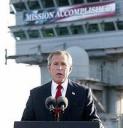
If you missed seeing it, or if you wish to forward it to your email lists, You can watch Bill Moyer’s Journal: Buying the war online.
How the administration marketed the war to the American people has been well covered, but critical questions remain: How and why did the press buy it, and what does it say about the role of journalists in helping the public sort out fact from propaganda?
Set your PVR’s and stock up on popcorn, because this is really gonna be can’t miss TV.
David Swanson, who saw an advance copy of the program, writes, “Spending that 90 minutes on this will actually save you time, because you’ll never watch television news again-not even on PBS, which comes in for its share of criticism.”
On Wednesday, April 25 at 9 P.M. on PBS (check local listings), watch the premiere epidsode of Bill Moyer’s newest show on PBS, Bill Moyers Journal. Their first show will be “Buying the War,” a 90-minute documentary that explores the role of the press in the lead-up to the invasion of Iraq, it includes interviews with Dan Rather, formerly of CBS; Tim Russert of Meet the Press; Bob Simon of 60 Minutes; Walter Isaacson, former president of CNN; and John Walcott, Jonathan Landay and Warren Strobel of Knight Ridder newspapers (now McClatchy).
In this clip from the premiere of Bill Moyers Journal on PBS, Bob Simon of 60 Minutes, who was based in the Middle East, talks about the reporting he was seeing and reading out of the beltway, and John Walcott and Warren Strobel of Knight Ridder newspapers (now The McClatchy Company), discuss their work burrowing deep into the intelligence agencies to determine whether there was any evidence for the Bush Administration’s case for war.
 Four years ago on May 1, President Bush landed on the aircraft carrier USS Lincoln wearing a flight suit and delivered a speech in front of a giant “Mission Accomplished” banner. He was hailed by media stars as a “breathtaking” example of presidential leadership in toppling Saddam Hussein. Despite profound questions over the failure to locate weapons of mass destruction and the increasing violence in Baghdad, many in the press confirmed the White House’s claim that the war was won. MSNBC’s Chris Matthews declared, “We’re all neo-cons now;” NPR’s Bob Edwards said, “The war in Iraq is essentially over;” and Fortune magazine’s Jeff Birnbaum said, “It is amazing how thorough the victory in Iraq really was in the broadest context.”
Four years ago on May 1, President Bush landed on the aircraft carrier USS Lincoln wearing a flight suit and delivered a speech in front of a giant “Mission Accomplished” banner. He was hailed by media stars as a “breathtaking” example of presidential leadership in toppling Saddam Hussein. Despite profound questions over the failure to locate weapons of mass destruction and the increasing violence in Baghdad, many in the press confirmed the White House’s claim that the war was won. MSNBC’s Chris Matthews declared, “We’re all neo-cons now;” NPR’s Bob Edwards said, “The war in Iraq is essentially over;” and Fortune magazine’s Jeff Birnbaum said, “It is amazing how thorough the victory in Iraq really was in the broadest context.”
 How did the mainstream press get it so wrong? How did the evidence disputing the existence of weapons of mass destruction and the link between Saddam Hussein to 9-11 continue to go largely unreported? “What the conservative media did was easy to fathom; they had been cheerleaders for the White House from the beginning and were simply continuing to rally the public behind the President — no questions asked. How mainstream journalists suspended skepticism and scrutiny remains an issue of significance that the media has not satisfactorily explored,” says Moyers. “How the administration marketed the war to the American people has been well covered, but critical questions remain: How and why did the press buy it, and what does it say about the role of journalists in helping the public sort out fact from propaganda?”
How did the mainstream press get it so wrong? How did the evidence disputing the existence of weapons of mass destruction and the link between Saddam Hussein to 9-11 continue to go largely unreported? “What the conservative media did was easy to fathom; they had been cheerleaders for the White House from the beginning and were simply continuing to rally the public behind the President — no questions asked. How mainstream journalists suspended skepticism and scrutiny remains an issue of significance that the media has not satisfactorily explored,” says Moyers. “How the administration marketed the war to the American people has been well covered, but critical questions remain: How and why did the press buy it, and what does it say about the role of journalists in helping the public sort out fact from propaganda?”
 In “Buying the War” Bill Moyers and producer Kathleen Hughes document the reporting of Walcott, Landay and Strobel, the Knight Ridder team that burrowed deep into the intelligence agencies to try and determine whether there was any evidence for the Bush Administration’s case for war. “Many of the things that were said about Iraq didn’t make sense,” says Walcott. “And that really prompts you to ask, ‘Wait a minute. Is this true? Does everyone agree that this is true? Does anyone think this is not true?'”
In “Buying the War” Bill Moyers and producer Kathleen Hughes document the reporting of Walcott, Landay and Strobel, the Knight Ridder team that burrowed deep into the intelligence agencies to try and determine whether there was any evidence for the Bush Administration’s case for war. “Many of the things that were said about Iraq didn’t make sense,” says Walcott. “And that really prompts you to ask, ‘Wait a minute. Is this true? Does everyone agree that this is true? Does anyone think this is not true?'”
 In the run-up to war, skepticism was a rarity among journalists inside the Beltway. Journalist Bob Simon of 60 Minutes, who was based in the Middle East, questioned the reporting he was seeing and reading. “I mean we knew things or suspected things that perhaps the Washington press corps could not suspect. For example, the absurdity of putting up a connection between Saddam Hussein and Al Qaeda,” he tells Moyers. “Saddam…was a total control freak. To introduce a wild card like Al Qaeda in any sense was just something he would not do. So I just didn’t believe it for an instant.” The program analyzes the stream of unchecked information from administration sources and Iraqi defectors to the mainstream print and broadcast press, which was then seized upon and amplified by an army of pundits. While almost all the claims would eventually prove to be false, the drumbeat of misinformation about WMDs went virtually unchallenged by the media. THE NEW YORK TIMES reported on Iraq’s “worldwide hunt for materials to make an atomic bomb,” but according to Landay, claims by the administration about the possibility of nuclear weapons were highly questionable. Yet, his story citing the “lack of hard evidence of Iraqi weapons” got little play. In fact, throughout the media landscape, stories challenging the official view were often pushed aside while the administration’s claims were given prominence. “From August 2002 until the war was launched in March of 2003 there were about 140 front page pieces in THE WASHINGTON POST making the administration’s case for war,” says Howard Kurtz, the POST’s media critic. “But there was only a handful of stories that ran on the front page that made the opposite case. Or, if not making the opposite case, raised questions.”
In the run-up to war, skepticism was a rarity among journalists inside the Beltway. Journalist Bob Simon of 60 Minutes, who was based in the Middle East, questioned the reporting he was seeing and reading. “I mean we knew things or suspected things that perhaps the Washington press corps could not suspect. For example, the absurdity of putting up a connection between Saddam Hussein and Al Qaeda,” he tells Moyers. “Saddam…was a total control freak. To introduce a wild card like Al Qaeda in any sense was just something he would not do. So I just didn’t believe it for an instant.” The program analyzes the stream of unchecked information from administration sources and Iraqi defectors to the mainstream print and broadcast press, which was then seized upon and amplified by an army of pundits. While almost all the claims would eventually prove to be false, the drumbeat of misinformation about WMDs went virtually unchallenged by the media. THE NEW YORK TIMES reported on Iraq’s “worldwide hunt for materials to make an atomic bomb,” but according to Landay, claims by the administration about the possibility of nuclear weapons were highly questionable. Yet, his story citing the “lack of hard evidence of Iraqi weapons” got little play. In fact, throughout the media landscape, stories challenging the official view were often pushed aside while the administration’s claims were given prominence. “From August 2002 until the war was launched in March of 2003 there were about 140 front page pieces in THE WASHINGTON POST making the administration’s case for war,” says Howard Kurtz, the POST’s media critic. “But there was only a handful of stories that ran on the front page that made the opposite case. Or, if not making the opposite case, raised questions.”
 “Buying the War” examines the press coverage in the lead-up to the war as evidence of a paradigm shift in the role of journalists in democracy and asks, four years after the invasion, what’s changed? “More and more the media become, I think, common carriers of administration statements and critics of the administration,” says THE WASHINGTON POST’s Walter Pincus. “We’ve sort of given up being independent on our own.”
“Buying the War” examines the press coverage in the lead-up to the war as evidence of a paradigm shift in the role of journalists in democracy and asks, four years after the invasion, what’s changed? “More and more the media become, I think, common carriers of administration statements and critics of the administration,” says THE WASHINGTON POST’s Walter Pincus. “We’ve sort of given up being independent on our own.”
“Buying the War” is produced by Kathleen Hughes. Written by: Bill Moyers and Kathleen Hughes. Edited by: Alison Amron. Executive Editors: Bill Moyers and Judith Davidson Moyers. Executive Producers: Felice Firestone and Judy Doctoroff O’Neill.
About Bill Moyers Journal
Ideas, Analysis, and Interviews
from Bill Moyers weekly on PBS
Fridays at 9 beginning April 27
BILL MOYERS JOURNAL is supported by an extensive companion Web site at pbs.org/moyers where visitors can interact, give feedback and sign up for the Moyers podcast, which was listed in iTunes Best of 2006 People’s Choice top 100 new podcasts. After the broadcast, each episode will be available in its entirety for viewing online. The Web site is produced by Kristin Miller.
Funders for BILL MOYERS JOURNAL include: the Partridge Foundation, a John and Polly Guth Charitable Fund; the Park Foundation, dedicated to heightening public awareness of critical issues; The Herb Alpert Foundation; Marilyn and Bob Clements and The Clements Foundation; Bernard and Audrey Rapoport and the Bernard and Audrey Rapoport Foundation; Fetzer Institute; the Orfalea Family Foundation; the Public Welfare Foundation, and our sole corporate sponsor Mutual of America Life Insurance Company.
BILL MOYERS JOURNAL is a production of Public Affairs Television, Inc. and a national presentation of Thirteen/WNET New York.


